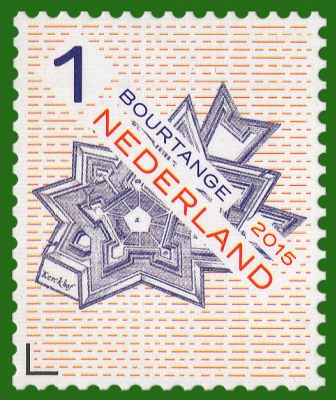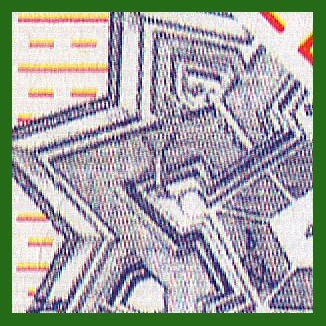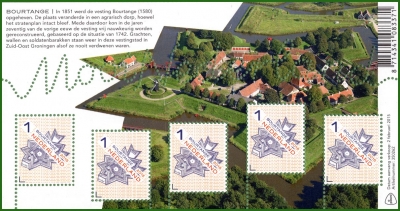-
Beautiful Netherlands. Forts
Netherlands 2015.02.02
In issue: Stamp(s): 3 Sheet(s): 3
Printing: multicoloral offset
Issued in: small sheets (listed as a souvenir sheet in the Dutch catalog) of 5 stamps
-
Number by catalogue: Michel: 3326A Yvert: 3326A Scott: 3180
Perforation: Comb Perforation type: 14 ½x14 ¼
Subject:
Non-rated stamp type "1º", suitable for sending correspondence up to 20 grams in the Netherlands. On the day of issue, the face value was 69 eurocents.
Old map of the city of Bourtange*. As usual, there was a windmill in the fortified cities. Here it is also present on the map (see fragment).
Topics: Windmills
-
Number by catalogue: Michel: 3326AKB
Perforation: Comb Perforation type: 14 ½x14 ¼
Subject:
The mini sheet contains 5 identical stamps and is decorated with a modern bird's eye view of the city.
The fragment clearly shows a well-preserved and well-maintained windmill.Small sheet like a souvenir sheet is only counted in the German catalog Michel and Dutch NVPH. In other catalogs, it is considered as a mini sheet.
Additional:
*Fort Bourtange (Dutch: Vesting Bourtange) is a fort in the village of Bourtange, Groningen, Netherlands. It was built under orders of William the Silent and completed in 1593. Its original purpose was to control the only road between Germany and the city of Groningen, which was controlled by the Spaniards during the time of the Eighty Years' War.
After experiencing its final battle in 1672, the Fort continued to serve in the defensive network on the German border until it was finally given up in 1851 and converted into a village. Fort Bourtange currently serves as a historical museum.
At the start of the Eighty Years' War (1568–1648), the Spaniards had control over Groningen and the passage to Germany through a marshy area. William, the instigator of the Dutch Revolt, deemed it necessary to seize control of the link between Groningen and Germany. He decided to have a fortification built in the Bourtange passage. A fort was completed in 1593, with a network of canals and lakes which were used as moats. Soon after its construction, Spanish forces from Groningen besieged it, though the attack ended in failure.
Fort Bourtange faced another siege in 1672 against invading forces of the Prince-Bishop of Münster, France's German ally in the Franco-Dutch War. After capturing 18 cities and towns in the northern Netherlands, they demanded that the Fort be surrendered. The fort's governor, Captain Protts, refused, and the Münsters replied with a frontal assault. Thanks to the surrounding marshes and the time-tested fortifications, the invading army was repelled successfully.
After its conversion into a village in 1851, living conditions began to deteriorate. Over 100 years later in 1960, the local government decided to stop the decline by restoring the old Fort to its 1740–50 appearance and converting into a historical museum.
__________
The information used was taken from Wikipedia
Size (of sheet, booklet) mm: 144x75
Topics: Windmills





2015-1ss-frgm.jpg)